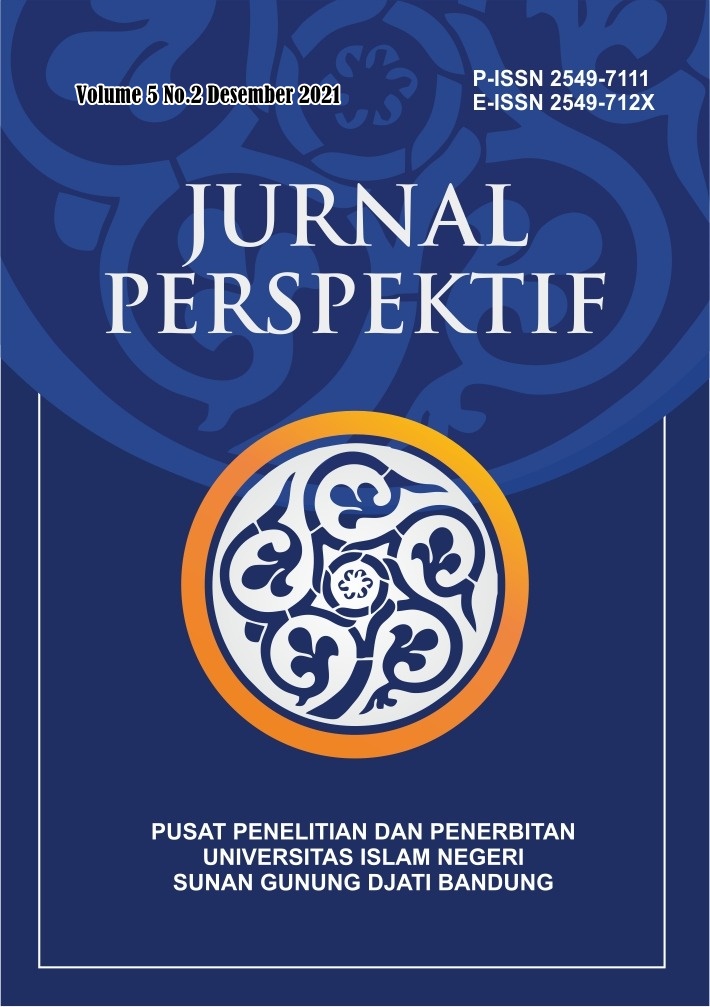CORAK TASAWUF KYAI HAJI AHMAD SANUSI (1888-1950) SUKABUMI Kajian Atas Kitab Siraj al-Adzkiya Fi Tarjamah al- Azkiya
DOI:
https://doi.org/10.15575/jp.v5i2.133Keywords:
Falsafi, Sunni, Tasawuf, dan SyariatAbstract
Kyai Haji Ahmad Sanusi merupakan ulama asal Sukabumi yang banyak menulis kitab berbahasa Sunda dengan huruf Arab pegon. Karya-karya kitabnya dalam berbagai jenis ilmu keislaman seperti tafsir, fiqih dan tasawuf. Salah satu kitab yang ditulisnya berjudul Siraj Al-adzkiya fi Tarjamah al- Azkiya, kitab ini termasuk pada ranah pengkajian tasawuf. Kitab tersebut merupakan terjamah dan syarah atas Kitab Hidayat al-Adzkiya ila Thariq al-Auliya karya India bernama Zainuddin Bin Ali al-Ma’bari al-Malibari. Dalam Kitab Siraj Al-adzkiya fi Tarjamah al- Azkiya terdapat beberapa pendapat pribadi Kyai Haji Ahmad Sanusi yang bisa menggambarkan corak tasawufnya. Secara global, tasawuf dibagi menjadi dua aliran yakni tasawuf sunni dan falsafi.
Downloads
Published
2021-12-16
How to Cite
Anwar, H. (2021). CORAK TASAWUF KYAI HAJI AHMAD SANUSI (1888-1950) SUKABUMI Kajian Atas Kitab Siraj al-Adzkiya Fi Tarjamah al- Azkiya. Jurnal Perspektif, 5(2), 130–145. https://doi.org/10.15575/jp.v5i2.133
Issue
Section
Jurnal Perspektif
Citation Check
License
Authors who publish in Jourrnal Perspektif agree to the following terms:- Authors retain copyright and grant the journal right of first publication with the work simultaneously licensed under a Attribution-ShareAlike 4.0 International (CC BY-SA 4.0) License that allows others to share the work with an acknowledgment of the work's authorship and initial publication in this journal.
- Authors are able to enter into separate, additional contractual arrangements for the non-exclusive distribution of the journal's published version of the work (e.g., post it to an institutional repository or publish it in a book), with an acknowledgment of its initial publication in this journal.
- Authors are permitted and encouraged to post their work online (e.g., in institutional repositories or on their website) prior to and during the submission process, as it can lead to productive exchanges, as well as earlier and greater citation of published work (See The Effect of Open Access).




